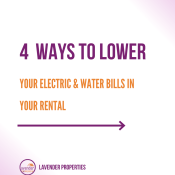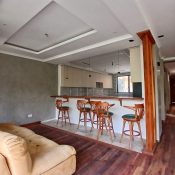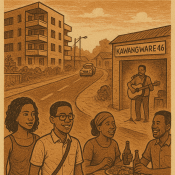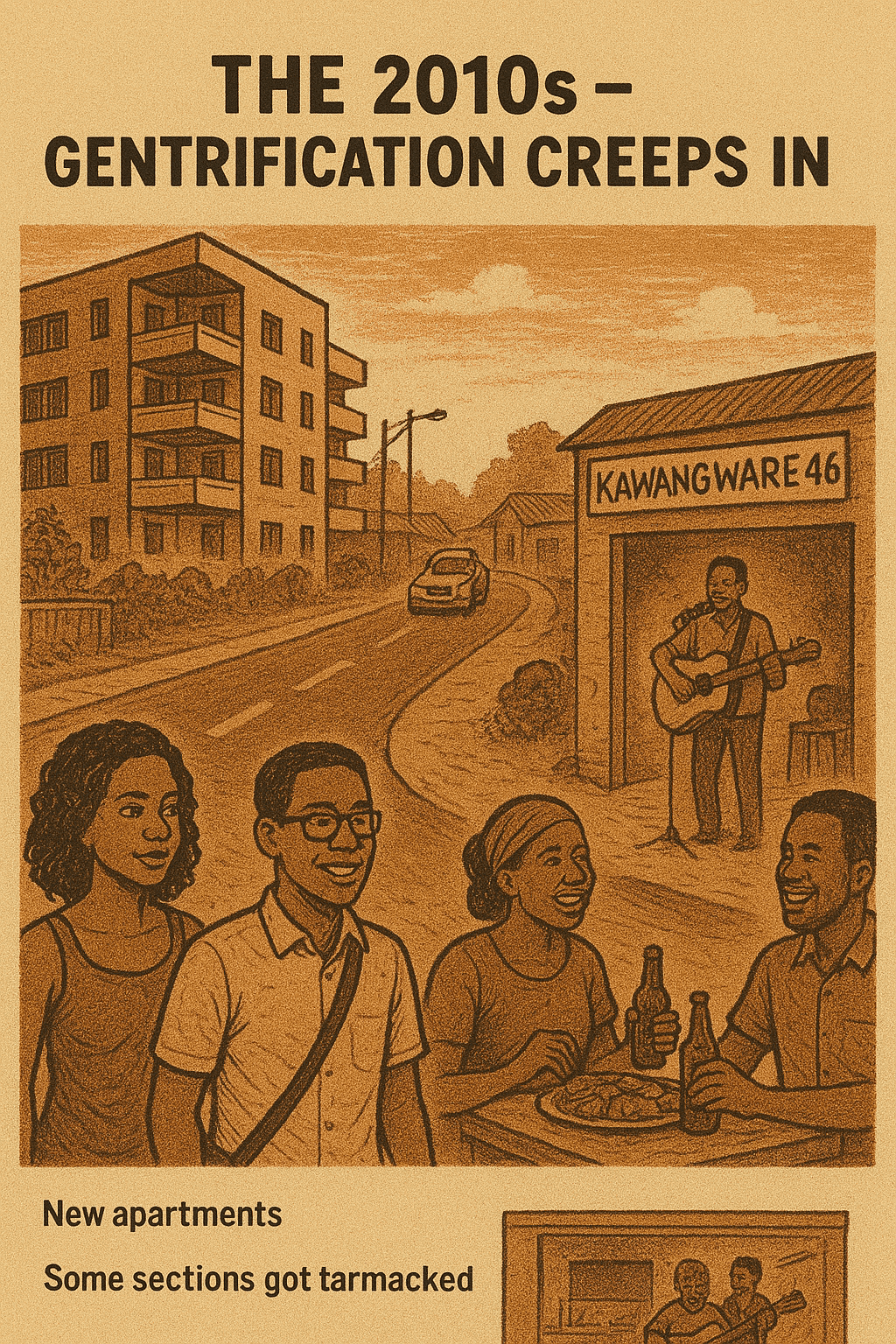
Would You Live Here? Kawangware Edition
If Parklands and Westlands were human sisters, they’d be the polished, well-off siblings who went to international schools and now run family businesses. Kawangware? That’s the hustling cousin who knows everyone, makes things happen, and keeps it real.
Nairobi is full of surprises, and every neighborhood has a story. This time, we’re diving into Kawangware—a place that doesn’t get glossy magazine features but thrives on raw energy, resilience, and an unmatched sense of community.
So, would you live here? Let’s break it down.
1. The 1980s – The Birth of a Working-Class Hub
Unlike Parklands, which was shaped by colonial planning, Kawangware grew organically as Nairobi expanded.
- Post-Independence Migration: After independence, rural-urban migration surged. People from Central Kenya, Nyanza, and Rift Valley moved to Nairobi in search of work.
- Unauthorized Settlements: With limited affordable housing, informal structures sprang up. Kawangware became a refuge for low-income workers—laborers, domestic workers, and small traders.
- No Fancy Bungalows Here: Homes were (and still are) single-room iron-sheet houses (mabati) or low-cost concrete rentals.

2. The 1990s – Survival & Small-Scale Enterprise
Kawangware earned its reputation as a hustler’s paradise.
- Jua Kali Workshops: Metalworkers, carpenters, and mechanics set up shop. Need a sofa, a window frame, or a metal gate? Kawangware had it.
- Mitumba Boom: The secondhand clothing trade exploded. To this day, Kawangware is one of the best places to buy affordable mitumba.
- Transport Hub: Matatus and boda bodas connected it to the rest of Nairobi—no tree-lined streets, just dusty, bustling roads.
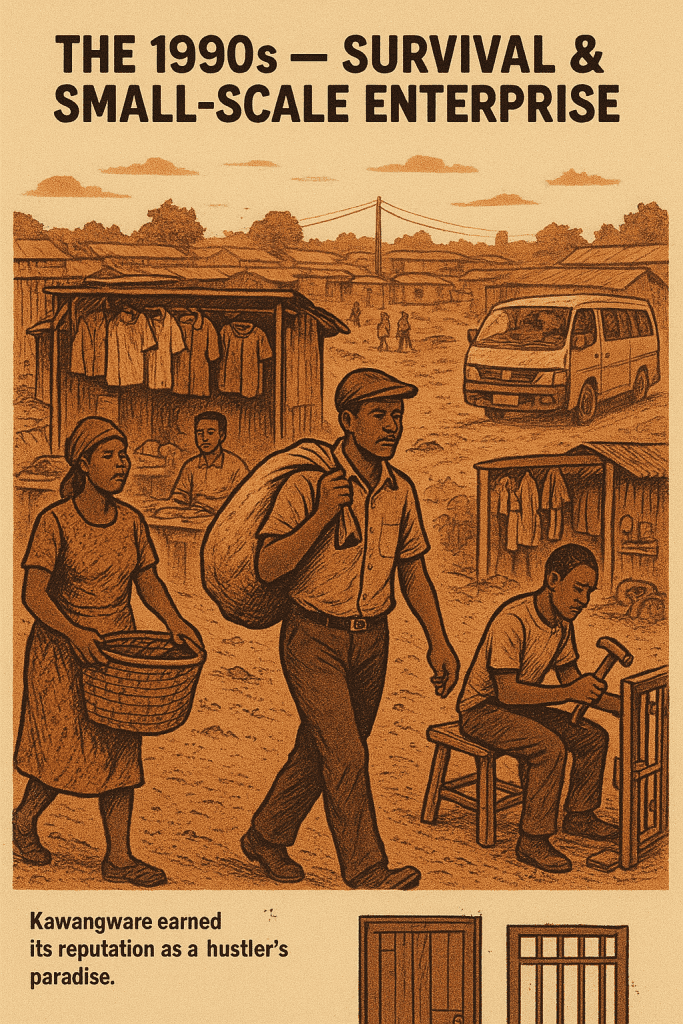
3. The 2000s – Crime & Resilience
Kawangware’s name often came with a stigma.
- Gang Activity: Areas like Sarang’ombe were (in)famous for crime. Police raids were common.
- But also… Community: Churches, chamas (savings groups), and local leaders worked to improve security.
- Affordable Living: While Westlands and Parklands became expensive, Kawangware remained one of Nairobi’s most budget-friendly neighborhoods.
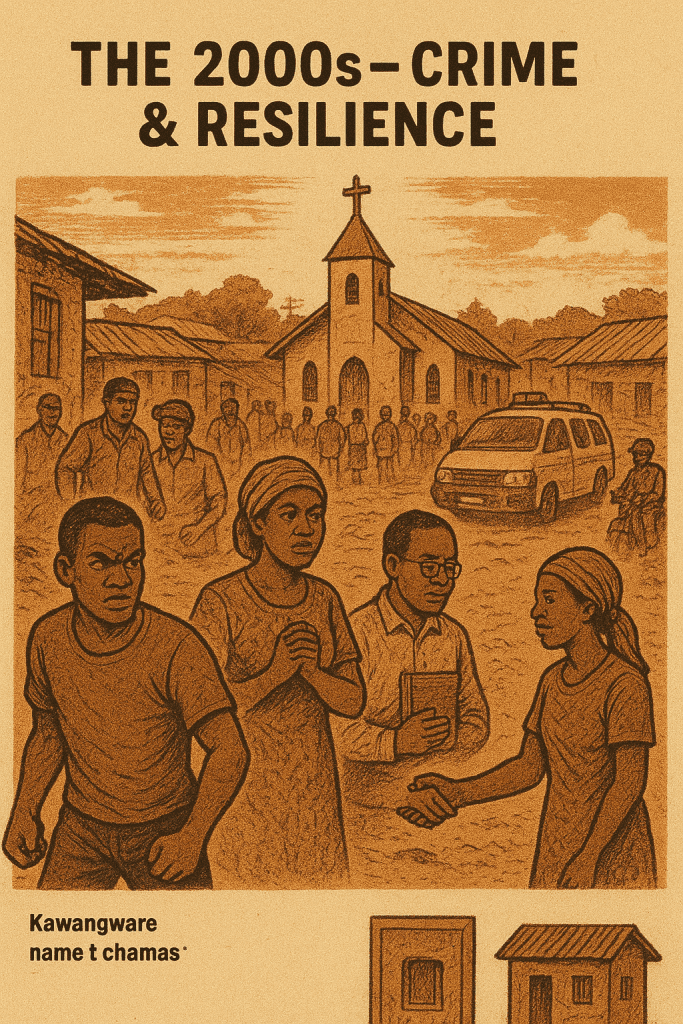
4. The 2010s – Gentrification Creeps In
Change started knocking.
- New Apartments: A few modern flats popped up, attracting young professionals looking for cheaper rent.
- Better Roads: Some sections got tarmacked (though floods still turn streets into rivers during rainy seasons).
- Nightlife & Food: Local joints like Kawangware 46 became spots for nyama choma and live music.
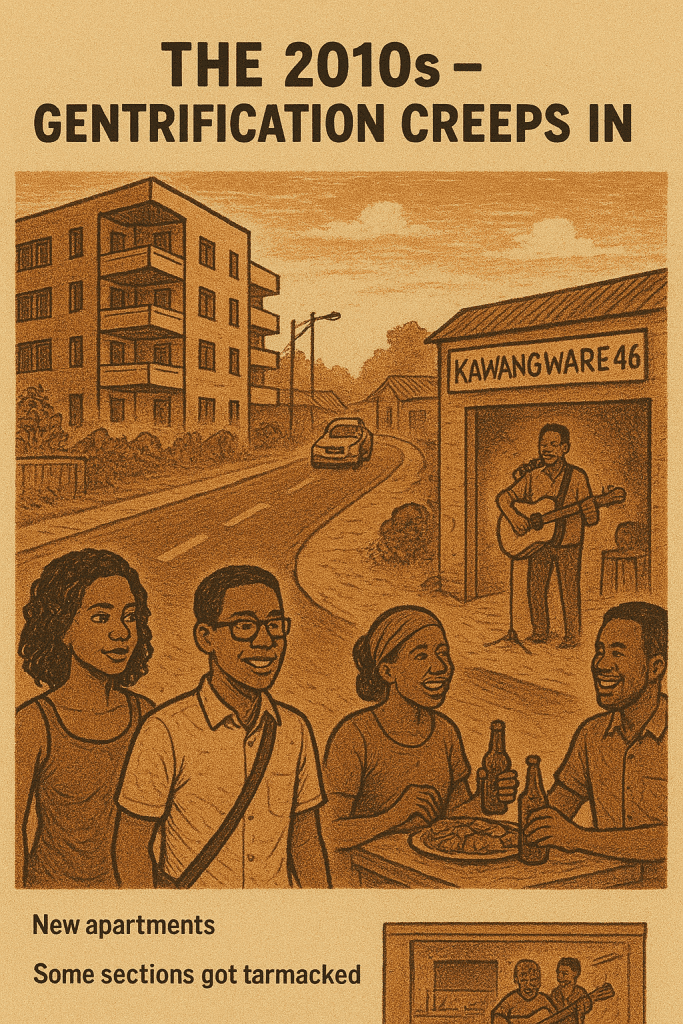
5. The 2020s – A Mix of Old and New
Kawangware is still rough around the edges, but it’s evolving.
- Still Affordable: Rent here is a fraction of what you’d pay in Parklands or Kilimani.
- Business is Booming: From street food vendors to hardware shops, the entrepreneurial spirit is strong.
- Challenges Remain: Water shortages, crowded housing, and poor drainage persist.
Final Thought: Would You Live Here?
If you want luxury and quiet, Kawangware isn’t for you. But if you crave vibrancy, affordability, and real Nairobian energy, it might just be home.
Pros:
✔ Affordable rent
✔ Thriving small businesses
✔ Strong sense of community
✔ Great street food
Cons:
✖ Overcrowding
✖ Poor infrastructure
✖ Occasional security concerns
Kawangware isn’t trying to be Parklands—and that’s the beauty of it. It’s Nairobi unfiltered.
Would you live here? Drop your thoughts in the comments!
Every Friday, we explore Nairobi’s neighborhoods. Where should we go next?

